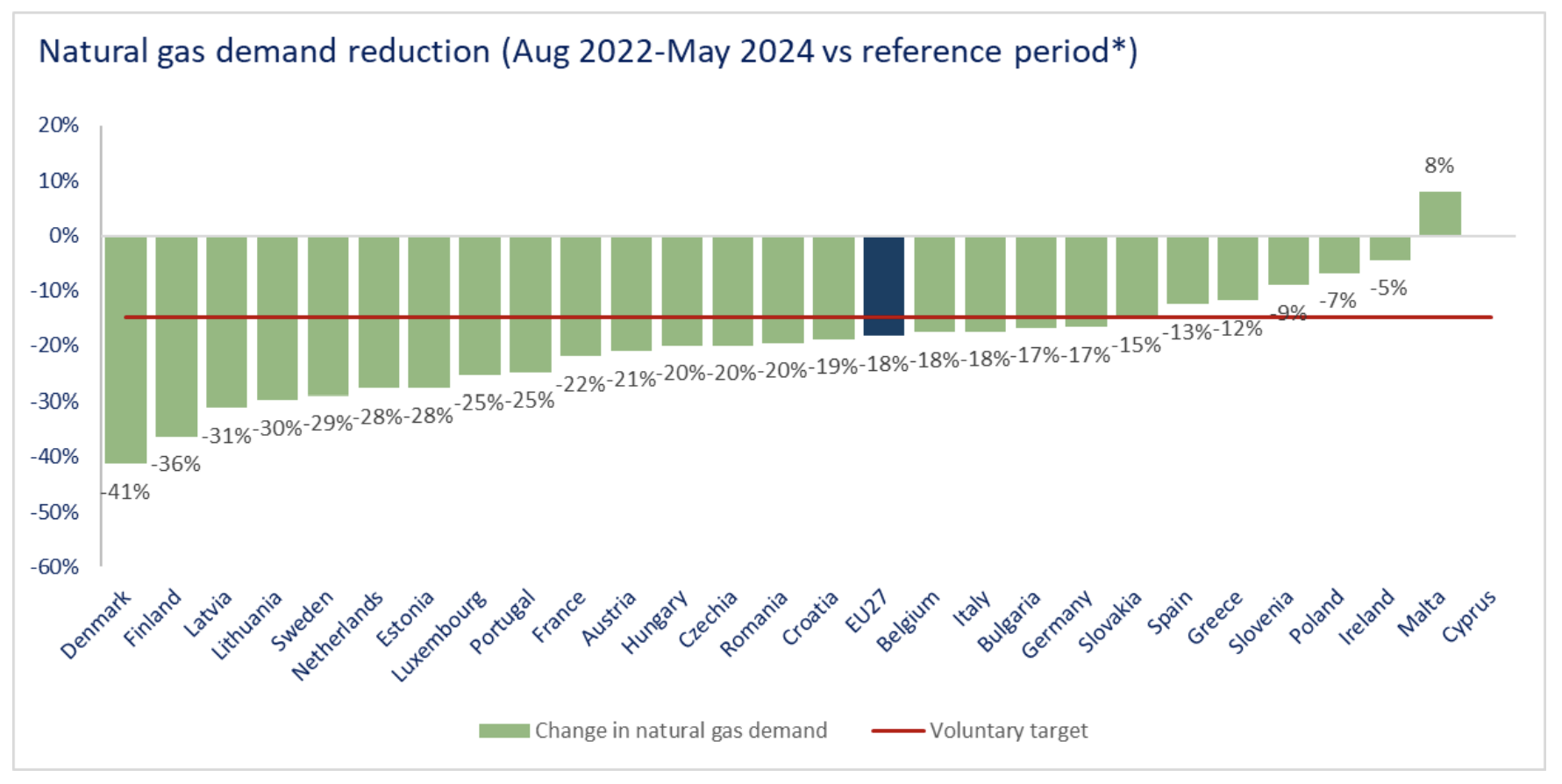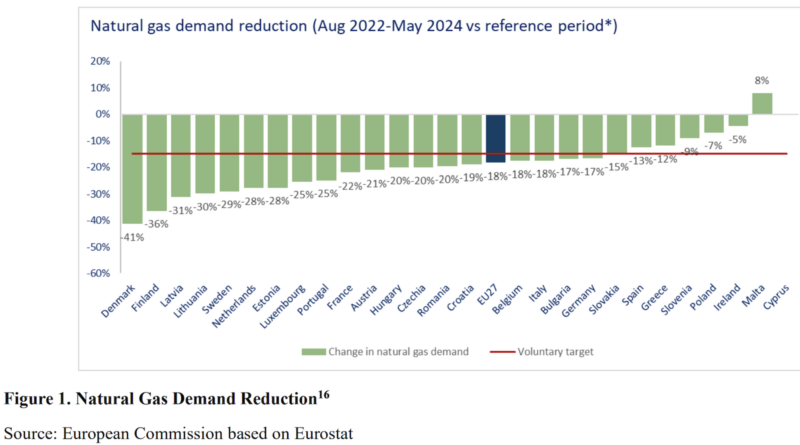European Union Ditching Fossil Gas Fast, Replacing with Solar & Wind
Support CleanTechnica's work through a Substack subscription or on Stripe.
The European Commission recently published its State of the Energy Union Report 2024. The Commission says that the report “describes how the EU has managed unprecedented challenges in the energy policy landscape during this Commission’s mandate, equipping the EU with a regulatory framework for pursuing the clean energy transition and laying the foundations for renewed economic growth and competitiveness.”
One of the notable challenges the EU is facing at the moment, of course, is the continued Russia invasion of Ukraine. Having previously relied on an enormous amount of fossil gas (aka natural gas) from Russia, the EU has had to find ways to replace it. Part of that has been getting fossil gas from elsewhere (most notably, the US). However, part of that has involved simply cutting demand for fossil gas. Overall, it’s impressive how much the Union has been able to do that, as evidenced in the following chart:

“The share of Russian gas in EU imports dropped from 45% in 2021 to 18% by June 2024, while imports from trusted partners like Norway and the US have increased,” the European Commission writes.
Naturally, much of the strategy for reducing their addiction to fossil gas is by building more renewable energy capacity. Within the new report itself, the European Commission writes, “In particular, the scale up of renewable energy production was at the centre of the REPowerEU Plan’s objective to build a secure and decarbonised energy system in the EU. The latest data show excellent results with the increase of installed wind and solar capacity by 36% between 2021 and 2023, saving approximately 35 billion cubic meters (bcm) of gas over 2 years. With 56 GW of new solar energy capacity installed in 2023, the EU has set yet another record, surpassing the additional 40 GW installed in 2022.”
Here’s a chart visualizing cumulative installed capacity of wind and solar power at the end of 2021, new capacity added in 2022, and projected new capacity additions in 2023 and 2024:

Not too shabby. However, there’s always more to do. “These figures represent important steps in the right direction, but further acceleration is needed to meet the REPowerEU targets under the EU Solar Energy Strategy and reach a total of at least 700 GW capacity by 2030, up from the estimated 263 GW installed at the end of 2023,” the Commission adds. “As for wind power, 16 GW of new capacity was installed in the EU in 2023, reaching a total 221 GW. While this shows good progress, the power sector needs to increase the pace of installation to meet the EU’s ambitious renewable energy targets, a challenge to which the Commission has responded with the adoption of the Wind Power Package, while striving for a balanced deployment in collaboration with local citizens to avoid that the energy transition is challenged because of concerns over landscapes, biodiversity, cultural heritage and lifestyles, especially in rural areas.”
Clearly, the European Union is improving on renewables and installing them at a faster and faster pace. But the most uplifting part of all of this is perhaps that they still see progress as too slow and are implementing more programs and plans to speed up the transition. Circling back to solar, the report adds, “Over the last years, the EU has taken several initiatives to strengthen the support to the European photovoltaic manufacturing sector by launching the European Solar PV Industry Alliance, adopting a Solar Charter, and setting up a public-private co-programmed partnership to support its coordinated R&I efforts.”
So, I think we can look forward to continued, strong progress in Europe in coming years. For now, though, we can rejoice in the progress made in the past few years under exceptional circumstances.
Sign up for CleanTechnica's Weekly Substack for Zach and Scott's in-depth analyses and high level summaries, sign up for our daily newsletter, and follow us on Google News!
Have a tip for CleanTechnica? Want to advertise? Want to suggest a guest for our CleanTech Talk podcast? Contact us here.
Sign up for our daily newsletter for 15 new cleantech stories a day. Or sign up for our weekly one on top stories of the week if daily is too frequent.
CleanTechnica uses affiliate links. See our policy here.
CleanTechnica's Comment Policy

